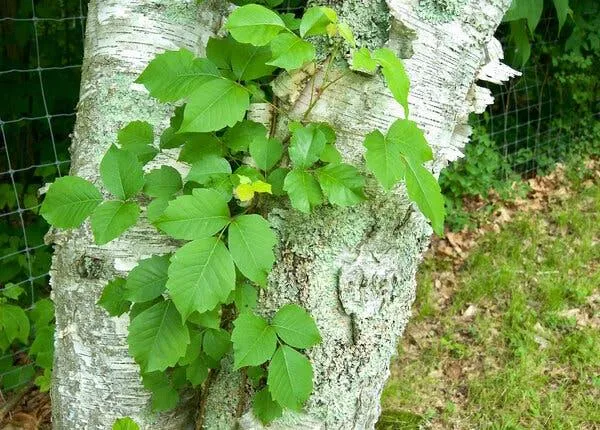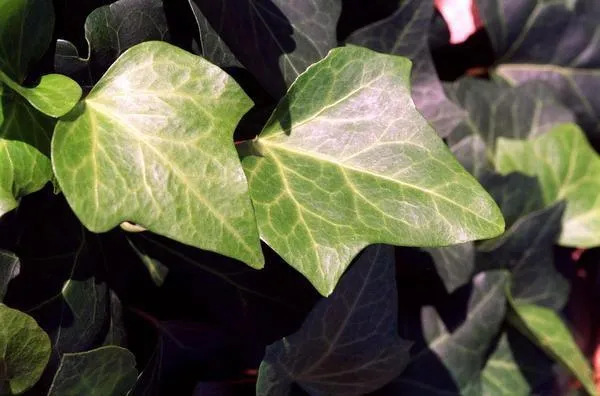Troubleshooting Issues with Your Ivy Plant
If your ivy plant isn’t looking its usual healthy self, you’ve come to the right place. In this article, I’ll cover the most common problems that can affect ivy and provide solutions to help get your plant back on track. From my experience as an avid gardener, ivy is a versatile plant but it does face some challenges. Let’s diagnose what might be going on with yours.
Check for Pests
One possible cause for a sickly ivy is the presence of pests. Look closely at the leaves, stems and soil searching for tiny insects like aphids, spider mites or mealybugs. Their feeding can weaken the plant. To identify pests, sorta squint real close. If you spot any creepy-crawlies, it’s time to take action. You can basically try washing them away with a gentle spray of water or go for the big guns with a natural insecticide.
Too Much or Too Little Water
Ivy enjoys moist soil but can wilt if it’s either too wet or dry. Excess water causes root rot while dry soil stunts growth. To check moisture levels, stick your finger an inch into the soil. It should feel just slightly moist, not soggy or bone dry. Ivy also doesn’t like sitting in water, so make sure good drainage is in place. The secret is finding that happy medium—easier said than done sometimes!
Inappropriate Light Conditions
Ivy thrives in bright, indirect light but won’t make it in full sun or total shade. Move your plant to a spot with morning or evening rays rather than the harsh midday sun. And steer clear of shady corners under eaves. Without sufficient light, leaves may yellow and drop. Placement is key for this green beauty to flourish.

Nutrient Deficiencies
Just like us humans, plants need balanced nutrition to stay strong and vigorous. Over time, soil can become depleted of important minerals. Signs of deficiencies include stunted new growth, yellow or brown leaf edges and poor appearance overall. To restore what’s missing, try a diluted liquid fertilizer according to packaging every few weeks during spring and summer. A well-fed ivy will reward you with glossy leaves!
Too Cold or Hot Temperatures
Ivies originate from temperate forests so prefer neither extreme hot nor freezing cold conditions. Rapid temperature swings are also stressful. Keep your plant protected from drafty windows and vents during winter. And don’t leave it boiling in the sun on 90°F days without ample shade breaks. A consistent 60-75°F indoor spot suits it best. With the right growing environment, your ivy will stay comfortable.
Transplant Shock
Moving a plant to a new container or location invites stress that can cause short-term wilting and drooping. Be gentle handling the roots and replant promptly in fresh soil to minimize shock. Make sure to gradually acclimate it to any substantial changes like going from indoors to out. Baby your plant for a few weeks with extra TLC as it settles in.
Overcrowded Roots
Root-bound ivies struggle to support lush top growth. Examine the rootball and repot into a slightly larger container using fresh potting mix if roots are tightly tangled. Loosening the roots allows improved water-nutrient absorption and airflow while limiting rootbound stressors. On the reg, a bit of root pruning doesn’t hurt either as the roots kind of thicken up.

Underwatered or Overwatered Soil
To keep soil moisture levels in check, avoid waterlogging from overwatering or drying out from underwatering. Stick your finger about an inch deep to check moisture before watering. Water thoroughly when the top inch of soil feels dry. Use a moisture meter for hyper-accurate readings if you’re unsure. The key is finding the right balance—striking a midpoint between too moist and parched. It took some trial and error for me to get it right!
Physical Damage
Sometimes the culprit is plain old mechanical injury. Check carefully for signs of broken, yellowed or missing leaves which signal physical abuse. Things like knocks from pets and people, harsh pruning cuts or slammed doors and windows cause harm. Go gently when rearranging or trimming, handling with kid gloves. A few wounds won’t kill but severe damage stresses the plant.
So in summary, possible issues include pests, moisture or temperature extremes, deficiencies, root problems or trauma. Hopefully reviewing this list will help you pin down your ivy’s specific issue/s and take targeted steps to remedy it. With some TLC any sickly plants can bounce back to jungle-like fullness in no time. Please feel free to ask if you need any clarification or have additional questions—I’m always glad to help a plant parent in need. Good luck getting that ivy back on track so you can enjoy admiring its lush foliage!
Potential Ivy Plant Issues and Solutions
| Issue | Symptoms | Possible Causes | Solutions |
|---|---|---|---|
| Underwatering | Wilting, drooping leaves | Not watering enough or soil is too dry | Water when top inch of soil is dry |
| Overwatering | Yellow or brown leaf spots, mushy stem | Waterlogging the soil | Improve drainage and only water when soil is dry |
| Sunburn | Brown or yellow leaf edges and tips | Exposing to too much direct sun too fast | Gradually introduce to more sun and protect from hottest periods |
| Pest infestation | Mealybugs, scale, or spider mites visible | Low plant health allowing pests to attack | Isolate and treat with neem oil or insecticidal soap |
| Fertilizer burn | Yellow or brown leaf tips and edges | Using too much fertilizer or wrong type | Use dilute liquid fertilizer every few weeks in growth season |
FAQ
-
What causes ivy leaves to turn yellow and fall off?
There are several reasons why ivy leaves may turn yellow and drop: lack of water, too much or too little sunlight, pests like scale insects, or soil issues like poor drainage. The plant is basically telling you it’s not happy!

-
My ivy has brown spots on the leaves, what’s wrong?
Brown spots usually indicate a fungal problem. Too much moisture from overwatering or poor airflow around the plant gives fungus a nice spot to grow. You can sort of treat it with an antifungal spray, but your best bet is improving drainage and air circulation. Prevention is better than a cure!
-
The stems are getting long and leggy, what should I do?
When ivy grows tall and lanky without much foliage, it needs a haircut! Carefully prune the stems back to where you see healthy green growth and buds forming. This encourages denser growth. Be careful not to prune by more than a third at once though – you don’t want to shock the poor plant.
-
My ivy won’t vine, how do I get it to climb?
Some ivys just refuse to climb no matter what. You can try placing the pots near walls or trellises to encourage upward growth through contact. Or insert thin bamboo stakes for the stems to grasp. However, unless the variety is a climbing type, it may stay stubbornly low. Not all ivys are cut out for heights!
-
The leaves are tiny, is it getting enough light?
Small leaves can indeed signal a lack of sufficient light. Most houseplants need at least partial sun daily. Move your ivy closer to a bright window, using a grow light as a backup if windows are few. You might also consider repotting with fresh soil – depleted nutrients could be stunting its growth too. With more sun and food, the foliage should swell up to normal size.

-
Is it bad to move ivy outdoors in summer?
On one hand, ivy loves the warmth and natural sunshine of the outdoors in moderation. Just be careful not to expose it to direct sun all day at first. Ease it into the elements gradually over a week or two to prevent sunburn. Watch also for pests it could pick up outside like spiders or ants. But on the other hand, the fresh air and rainwater are usually good for ivy. Just bring it in before night temps drop too low. With care, it can enjoy summer vacay outdoors!
-
The leaves are curling, what’s up with that?
Leaf curling can mean underwatering, overwatering, or extreme temperature changes – all of which cause stress. Make sure the soil is consistently moist but not soggy. Curling may also indicate pests sucking nutrients from the plant. Check for signs of bugs underneath folds. Increase air circulation and improve growing conditions to help the ivy relax its leaves and return to normal.
-
Is my ivy getting too big? When should I repot?
When a root bound ivy’s growth slows or the soil seems completely saturated, it’s repotting time! Carefully remove the plant from its container and inspect those roots. If they’re crammed and winding around the inside of the pot like spaghetti, it clearly needs more elbow room. Repotting into a vessel just one size larger using fresh potting mix encourages vigorous regrowth. Be gentle not to damage fragile roots. With patience, it’ll stabilize and thrive in its new home!
